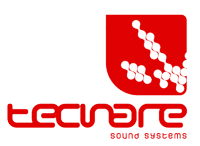How to Mix Live Sound: The Science of EQ, Monitoring, Line Arrays, and Subwoofers
How to Mix Live Sound Like a Pro: Techniques for Clear, Powerful Concert Audio
Mixing a live band isn’t just about plugging in gear and cranking volumes—it’s an exercise in acoustic physics, auditory psychology, and energy management. Every technical decision has a scientific basis that determines clarity, impact, and sonic coherence. Below, we break down the principles behind optimal live sound reinforcement.
The Science Behind Professional Live Sound Reinforcement
Featured Articles
Tecnare
Loudspeakers Series
E Series
IBZA Series
V Series
ALIS Series
Array Series
SW Series
KT Series
TANIT Series
CS Series
Amplifiers Series
Digital Processors
Accessories
AUDIO
